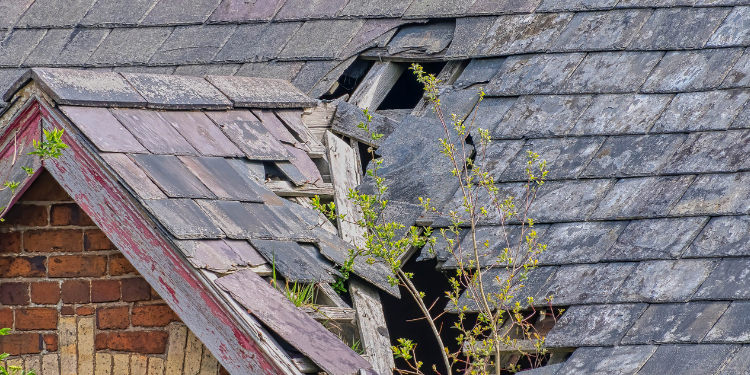When it comes to maintaining a sturdy and leak-free roof, flashing plays an essential role in protecting your home from water damage. For homeowners in Rockwall, Texas, understanding the importance of roof flashing can help prevent expensive repairs and long-term damage. At Graves Roofing & Restoration, we prioritize the health of your roof by ensuring all elements, including flashing, are installed and maintained with expert care. Roof flashing is a key component in safeguarding your home, yet many homeowners overlook it until it’s too late.
Key Takeaway
Roof flashing acts as a vital barrier, redirecting water away from vulnerable areas like chimneys, vents, and skylights. By sealing these areas effectively, roof flashing prevents water from seeping into your home, thereby avoiding costly leaks and structural damage.
What Is Roof Flashing?
Roof flashing is a thin material, typically made from galvanized steel or aluminum, installed to direct water away from critical points of the roof. It’s particularly necessary where different surfaces meet, such as around chimneys, valleys, or the edges of skylights. These junctions are more susceptible to water penetration, and without proper flashing, they can become the source of serious leaks.
Flashing for Chimneys
The base of chimneys is one of the most common places for water to infiltrate your home. Flashing is installed here to create a watertight seal, preventing moisture from sneaking through gaps. This type of flashing usually comes in two parts: step flashing along the roofline and counter flashing that overlaps the step flashing.
Flashing for Skylights
Skylights add beauty and natural light to your home, but without proper flashing, they can be a major source of leaks. Installing flashing around the perimeter ensures that water flows off the roof and away from the skylight instead of collecting around the edges.
Valley Flashing
Where two roof planes meet, valleys are formed. These areas often experience a high volume of water flow during rainstorms. Valley flashing is installed in these areas to channel water away, keeping your home safe from potential water damage. If the flashing is poorly installed or deteriorated, the water can easily seep into your roof, causing damage.
The Importance of Proper Installation
Flashing installation requires precision and expertise. When poorly installed or neglected, even the highest quality materials can fail to prevent water intrusion. Improper installation leads to premature wear and tear, making your roof vulnerable to leaks.
The Role of Skilled Roofers
Installing flashing correctly is a task best left to professionals. Experienced roofers, like those at Graves Roofing & Restoration, understand the nuances of proper flashing installation. Our team ensures that flashing is securely fastened and sealed, providing long-lasting protection for your roof.
Common Installation Mistakes
One of the most frequent mistakes is not using enough flashing or using the wrong material for specific areas of the roof. Both of these errors compromise the water resistance of the roof, resulting in costly repairs down the line.
Long-Term Benefits of Proper Installation
When flashing is properly installed and maintained, it can significantly extend the life of your roof. This proactive approach helps you avoid unexpected repairs and water damage, giving you peace of mind knowing that your home is well-protected.
Signs Your Roof Flashing Needs Repair
Recognizing the signs that your roof flashing may need repair or replacement is crucial in maintaining the integrity of your roof. Regular inspections, especially after storms, can prevent minor issues from becoming major problems.
Visible Damage
If you notice cracks, rust, or warping in the flashing material, it’s time to call a professional. Damaged flashing no longer provides a reliable barrier against water and needs to be repaired to maintain the roof’s effectiveness.
Water Stains Inside the Home
Water stains on your ceiling or walls can indicate that your flashing is failing. These stains are often the first sign that water is seeping through the roof and into your home, potentially causing mold and other damage.
Loose or Missing Flashing
High winds and severe weather conditions common in Rockwall, Texas, can loosen or dislodge roof flashing. If flashing is missing, water can easily find its way into your home, making it critical to replace or secure it as soon as possible.
Roof Flashing Maintenance
Proper maintenance of your roof flashing is essential to prevent leaks and extend the life of your roof. Regular inspections and timely repairs ensure that your flashing continues to protect your home year after year.
Seasonal Inspections
Inspecting your roof flashing at least twice a year, especially before and after storm season, can help identify any potential issues early. For homeowners in Rockwall, a region prone to severe weather, regular inspections are particularly important.
Prompt Repairs
Even minor damage to roof flashing should be addressed promptly. Small issues, if left untreated, can lead to bigger problems, like leaks and structural damage. Timely repairs ensure that your roof continues to function properly.
Partnering with Professional Roofers
While you can perform visual inspections, it’s always a good idea to hire a professional roofer for a thorough inspection. Graves Roofing & Restoration provides comprehensive inspections and repairs, ensuring your roof remains in top condition.
How Flashing Protects Your Home in Different Weather Conditions
Rockwall, Texas, experiences a range of weather conditions, from intense heat to heavy rain and high winds. Roof flashing plays a critical role in protecting your home against these elements.
Heavy Rain
During heavy rain, the volume of water flowing over your roof increases. Flashing directs this water away from vulnerable areas, preventing it from pooling and seeping into your home.
High Winds
High winds can dislodge shingles and flashing, making your roof vulnerable to water intrusion. Well-secured flashing protects your home by maintaining a solid barrier against wind-driven rain.
Extreme Heat
The intense Texas heat can cause materials to expand and contract, which over time can wear down your roof flashing. Choosing high-quality materials, like those used by Graves Roofing & Restoration, ensures that your flashing can withstand temperature fluctuations.
Answering Common Questions
What is roof flashing, and why is it important? Roof flashing is a thin material, usually made from metal, installed at joints or edges of the roof to prevent water from entering your home. It’s essential for directing water away from vulnerable areas, reducing the risk of leaks and water damage.
How often should roof flashing be inspected? It’s recommended to inspect your roof flashing at least twice a year and after any major storms. Regular inspections can identify damage early, allowing for timely repairs that prevent larger problems.
Can I repair roof flashing myself? While small repairs might seem manageable, it’s best to hire a professional roofer for flashing repairs. Proper installation is key to ensuring your flashing functions effectively and prevents water damage.
The Impact of Poor Roof Maintenance
Neglecting regular roof maintenance, including flashing inspections, can lead to extensive water damage and costly repairs. Moisture seeping through damaged flashing can cause mold growth, wood rot, and even structural damage to your home.
Poor Roof Maintenance and Water Damage
When roof flashing is compromised, water can easily penetrate your home, causing damage that goes beyond the surface. Water can infiltrate walls, insulation, and even electrical systems, creating a significant repair burden.
Seeking Expert Advice
If you’re unsure about the condition of your roof flashing or need an inspection, it’s always best to consult with professionals. Graves Roofing & Restoration offers expert guidance and roofing solutions tailored to protect your home from leaks and water damage.







